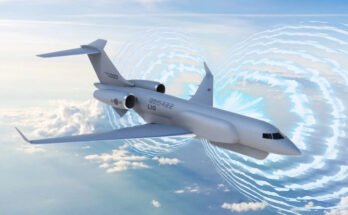by Dan Darling, International Military Markets Analyst, Forecast International.
If you were to look across the globe at the armed forces of the world’s many countries, you would be hard-pressed to find a military dissatisfied with a 9.6 percent year-on-year nominal increase to its budget. But for India, such an increase carries with it multiple questions.
These questions concern whether the increase is sufficient for the broad military requirements of a rising regional power; whether the government has grown tired of the armed forces’ constant, sometimes excessive demands; and simply whether the country’s traditional bureaucratic inertia is destined to doom India’s defense modernization efforts.
To begin, the latest defense budget outline provides a larger year-on-year boost than expected due to two factors.
The first factor was a downwardly revised 2015-16 budget that trimmed the originally announced earmark of INR2.47 trillion ($37.47 billion) by INR225 billion down to INR2.25 trillion ($34.05 billion) for the year. Thus, in the eyes of the military chiefs, the increase is less a 9.6 percent spike than a mere 1 percent top-up above their originally earmarked budget for last year.
The second factor was a huge year-on-year increase in military pensions (traditionally off-budget but, for the first time since the mid-1980s, now included as one of four major budgetary categories). Thanks to persistent and sometimes contentious demands made by India’s military veterans for one rank, one pension, the government opted to mitigate the political optics of the pension issue by increasing the pension from INR602 billion in 2015-16 to INR823 billion under the latest earmark. This amounts to a 37 percent year-on-year hike.
Adding to this complicated picture is that the capital element of the defense budget (i.e., the portion spent on equipment purchases and upgrades, as well as DRDO research and military infrastructure improvements) has remained underutilized over the course of three successive budgetary years, resulting in the full capitalization earmark going unspent ($1.5-$1.9 billion in 2015-16 alone).
This is all the more remarkable considering the pressures facing the Indian armed forces to update and improve their capabilities at a time when their equipment inventories are atrophying and increasingly falling into obsolescence. The military is tasked with defending India’s borders against the potential “collusive threat” of war with neighboring China and Pakistan while projecting power throughout the Indian Ocean region, and the failure to finalize contract agreements on new armaments raises all-too-familiar charges of incompetency within the Defence Ministry and each respective armed service branch.
Thus, India’s military procurement policy remains a dysfunctional mess at a time when China is annually bolstering its defense-related expenditures by double-digits and pursuing a broad military modernization program aimed at projecting strength well beyond its borders.
With roughly 90 percent of each fiscal year’s capital allocation within the larger Indian defense budget going to contractual obligations, what happens to the remaining 10 percent – generally set aside for fresh contracts – becomes ever more crucial.
In some instances, this unspent funding gets diverted towards revenue (salaries, logistical necessities/requirements), but moving forward, India has a slew of cost-intensive requirements that are unlikely to be met in timely fashion without additional monies.
For the Indian Air Force alone, these include the procurement of 36 Rafale combat aircraft from France, 56 C-295 tactical transport aircraft and six A330 multirole tanker transports from Airbus, five units of Russia’s S-400 Triumf advanced air defense missile systems, 280 engines from Honeywell for a Jaguar attack aircraft upgrade, and four additional P-8I maritime patrol aircraft from the United States.
Meanwhile, symbolism in some quarters of the Indian military comes across as important as substance.
For Indian military observers, when Finance Minister Arun Jaitly announced the government’s third budget on February 29, what was striking was less what he talked about than that he failed to mention the defense allocation. This marked the first such time a finance minister failed to do so in at least 15 years.
Amongst some of the Indian military brass, the growing consensus is that the government of Prime Minister Narendra Modi – which came to power in May 2014 vowing to modernize the armed forces – has over-promised and under-delivered where defense is concerned.
Yet, an argument could be made that the Modi government may simply be more frustrated by the military than disinterested.
Defence Minister Manohar Parrikar is on record stating that the armed forces chiefs have been “erratic buyers” in the past and need to revisit old proposals with an eye on dropping unnecessary and outdated requests. Parrikar also continues to emphasize the Modi government’s “Make in India” industrial policy, whereby more and more defense projects are to be undertaken via indigenous channels.
The military, however, has less faith in the short- and even medium-term capabilities of India’s defense sector. The service brass has generally preferred higher-end materiel sourced from foreign vendors under the assumption such acquisitions are more likely to result in higher-quality, more reliable equipment and timely delivery.
With some $100 billion worth of long-term requirements – and roughly $20 billion tied up in projects in the final stages of negotiation – the question comes down to whether the defense chiefs are willing to trim their procurement wish lists and warm to the idea of indigenous projects (either undertaken via direct domestic production or in collaboration between local companies and foreign vendors).
Yet, the Indian military is not without grounds for discomfort with the latest funding allocation.
The defense budget of INR2.49 trillion ($36.59 billion) minus pensions amounts to 1.71 percent of GDP – the lowest such level since India’s border war with China in 1962. Many argue that the requirements placed on the Indian Air Force require a much larger annual allocation, roughly 3 percent of GDP or higher.
Parrikar has pointed out that when pensions are factored into total defense expenditure, the budgetary bottom line figure jumps to 2.2 percent of GDP.
But what is left out of that argument are two crucial aspects that together mitigate much of the year-on-year nominal increase to the budget: inflation (around 4.8 percent) and the deterioration in value of the Indian rupee versus the U.S. dollar over the past two years (a nearly 39 percent decline). When both are factored into the equation, the budget increase is less than it appears to be on the surface.
More troubling from the military brass point of view, the critical capital allocation for new/upgraded weaponry – amounting to a mere 0.6 percent (INR439 million) nominal uptick from the previous fiscal year’s earmark of INR786.421 billion ($11.5 billion) – actually represents a decline in global purchasing power. This, in turn, inhibits final movement on the host of weapons projects nearing a negotiated settlement.
The question therefore appears to be whether the Modi government is letting the military know that it must curb its appetite and begin to accept domestic solutions for its equipment needs, or whether the government has in fact placed a lower priority on defense than it had promised in the run-up to the April-May 2014 elections.
For further information on this and more topics related to country-by-country military expenditures, force structures and other defense-, security-, economic- and political-related issues please see Forecast International’s International Military Markets series.
For 50 years, Forecast International intelligence reports have been the aerospace and defense industry standard for accurate research, analysis, and projections. Our experienced analysts compile, evaluate, and present accurate data for decision makers. FI's market research reports offer concise analysis of individual programs and identify market opportunities. Each report includes a program overview, detailed statistics, recent developments and a competitive analysis, culminating in production forecasts spanning 10 or 15 years. Let our market intelligence reports be a key part of reducing uncertainties and mastering your specific market and its growth potential. Find out more at www.forecastinternational.com




